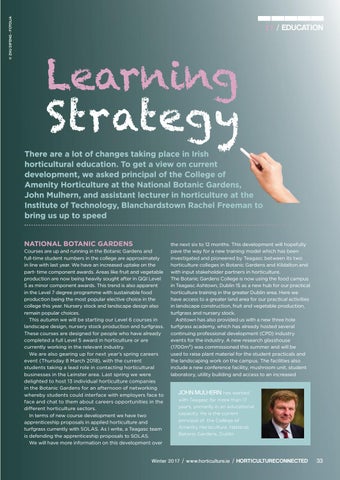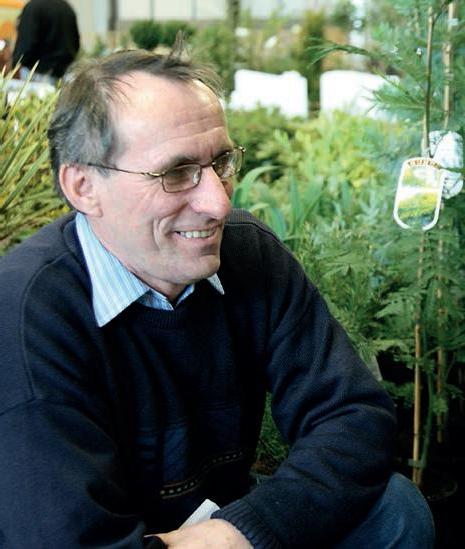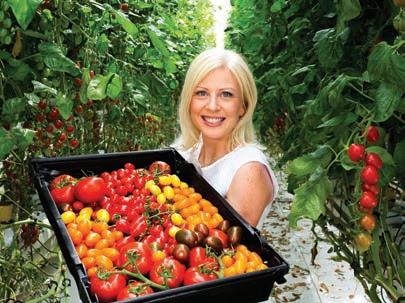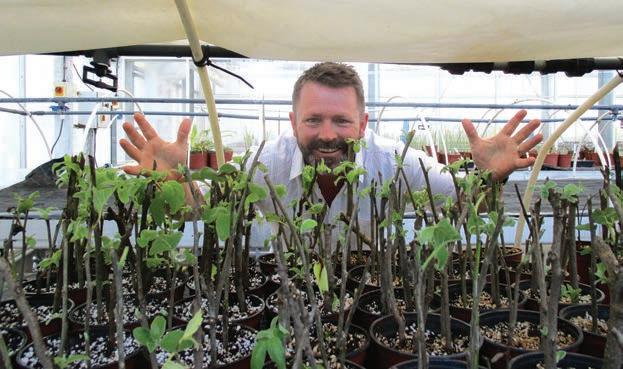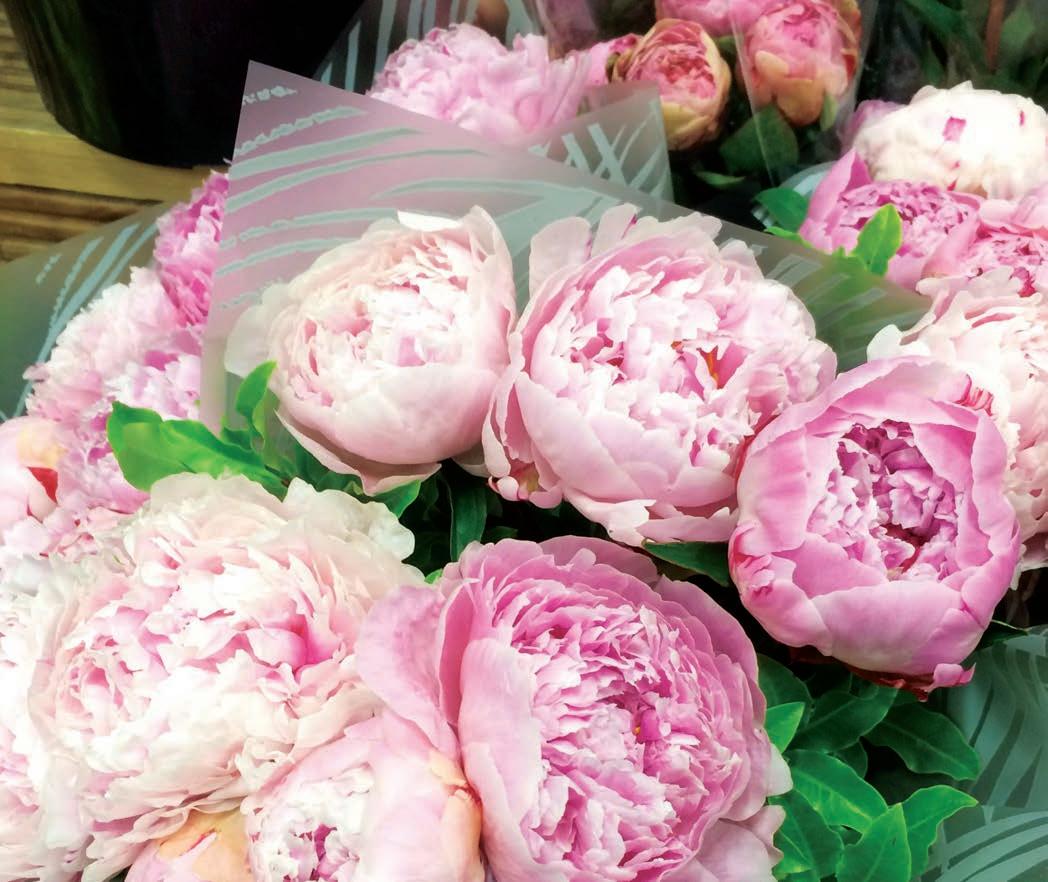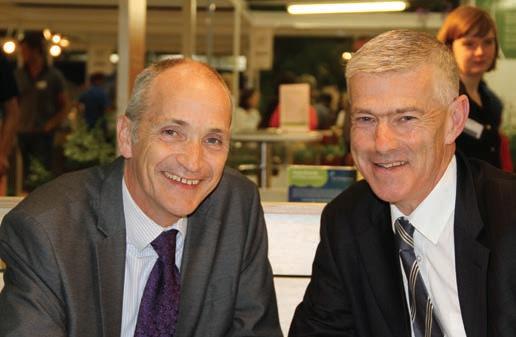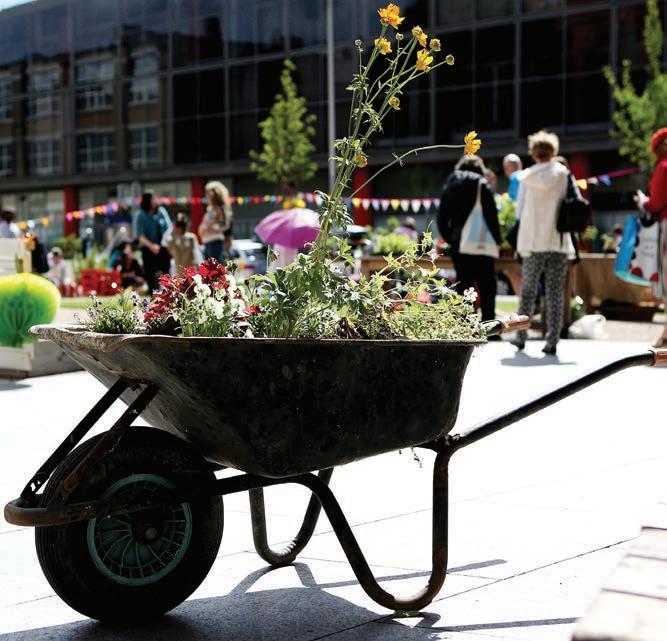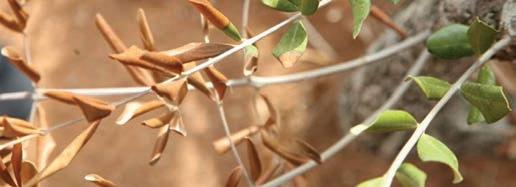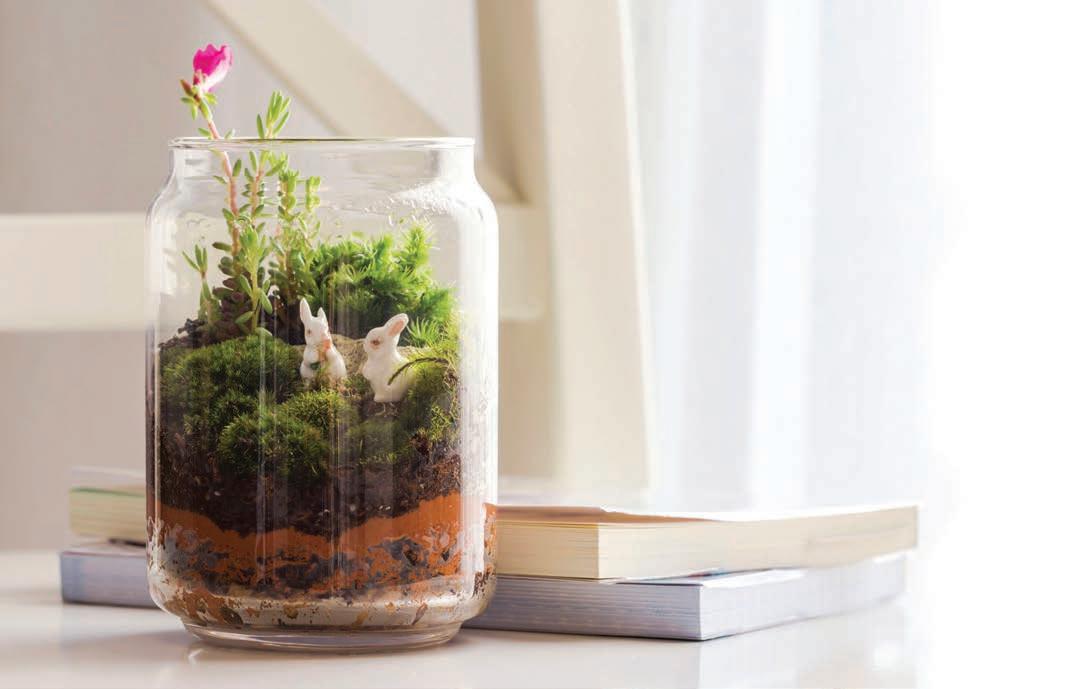© ZHU DIFENG - FOTOLIA
Learning Strategy
11 / EDUCATION
There are a lot of changes taking place in Irish horticultural education. To get a view on current development, we asked principal of the College of Amenity Horticulture at the National Botanic Gardens, John Mulhern, and assistant lecturer in horticulture at the Institute of Technology, Blanchardstown Rachel Freeman to bring us up to speed NATIONAL BOTANIC GARDENS
Courses are up and running in the Botanic Gardens and full-time student numbers in the college are approximately in line with last year. We have an increased uptake on the part- time component awards. Areas like fruit and vegetable production are now being heavily sought after in QQI Level 5 as minor component awards. This trend is also apparent in the Level 7 degree programme with sustainable food production being the most popular elective choice in the college this year. Nursery stock and landscape design also remain popular choices. This autumn we will be starting our Level 6 courses in landscape design, nursery stock production and turfgrass. These courses are designed for people who have already completed a full Level 5 award in horticulture or are currently working in the relevant industry. We are also gearing up for next year’s spring careers event (Thursday 8 March 2018), with the current students taking a lead role in contacting horticultural businesses in the Leinster area. Last spring we were delighted to host 13 individual horticulture companies in the Botanic Gardens for an afternoon of networking whereby students could interface with employers face to face and chat to them about careers opportunities in the different horticulture sectors. In terms of new course development we have two apprenticeship proposals in applied horticulture and turfgrass currently with SOLAS. As I write, a Teagasc team is defending the apprenticeship proposals to SOLAS. We will have more information on this development over
the next six to 12 months. This development will hopefully pave the way for a new training model which has been investigated and pioneered by Teagasc between its two horticulture colleges in Botanic Gardens and Kildalton and with input stakeholder partners in horticulture. The Botanic Gardens College is now using the food campus in Teagasc Ashtown, Dublin 15 as a new hub for our practical horticulture training in the greater Dublin area. Here we have access to a greater land area for our practical activities in landscape construction, fruit and vegetable production, turfgrass and nursery stock. Ashtown has also provided us with a new three hole turfgrass academy, which has already hosted several continuing professional development (CPD) industry events for the industry. A new research glasshouse (1700m²) was commissioned this summer and will be used to raise plant material for the student practicals and the landscaping work on the campus. The facilities also include a new conference facility, mushroom unit, student laboratory, utility building and access to an increased
JOHN MULHERN has worked with Teagasc for more than 17 years, primarily in an educational capacity. He is the current principal of the College of Amenity Horticulture, National Botanic Gardens, Dublin.
Winter 2017 / www.horticulture.ie / HORTICULTURECONNECTED
33
